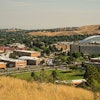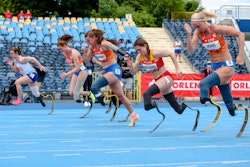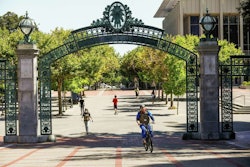A wheelchair design and construction course at San Francisco State University engaged David Marigmen so much that he currently works on chairs benefiting disabled children in developing nations.
It’s the kind of ambition and passion that course instructor Ralf Hotchkiss tries cultivating each time he introduces ambulatory students like Marigmen to the mobility challenges faced by wheelchair users of all ages in the developing world.
“This (work) can’t be done by just one person, and it’s helpful having fresh eyes and new ideas come in,” says Hotchkiss, a wheelchair user himself since age 18. In addition to the academic course, he has devoted more than 30 years to SFSU’s non-profit Whirlwind Wheelchair International. As Whirlwind’s co-founder and chief engineer, he focuses on producing and distributing durable yet inexpensive chairs so people with significant disabilities in countries such as Rwanda, Indonesia and Haiti can more easily go to work and school.
One out of 300 people in the developing world, according to the World Health Organization, needs an all-terrain chair that can be used without another person constantly pushing it. Such chairs will likely cross over tree roots or broken pavement, travel muddy village paths and navigate urban street curbs lacking ramps.
Hotchkiss and others continually tinker with new designs and make improvements to older ones. A scaled-down wheelchair for children, for instance, has long been offered by Whirlwind, but a more adjustable version is now under development that might accommodate youths ages 4 to 10, reducing the need and expense of frequent replacement. Marigmen, a senior majoring in industrial design, is researching and assessing different types of footrests for the new chair.
“I know it’s just a footrest, but it has to provide enough support for good posture,” says Marigmen, who knew little about wheelchairs before meeting Hotchkiss. “It also has to be safe so a kid’s leg doesn’t get caught, and I have to think about children who have one leg longer than the other. There’s much more at stake than if I was just making a car run faster.”
When he took Hotchkiss’s design and construction course last year, he learned firsthand how crucial a sturdy wheelchair is. Students were required to spend time each week riding prototypes around campus, and Marigmen lost count of how many times he found himself rolling backward when trying to go uphill. “And it was impossible to hold an umbrella in the rain and control the chair at once,” Marigmen recalls.




















